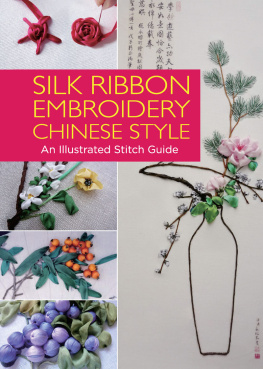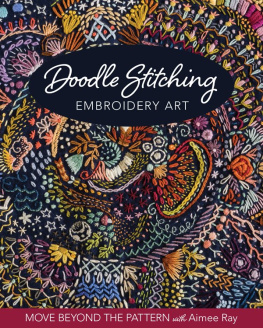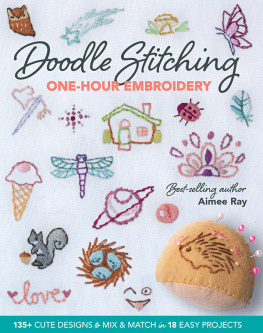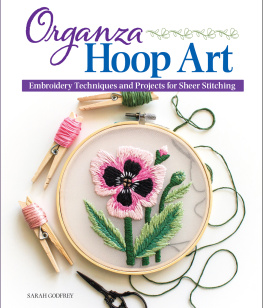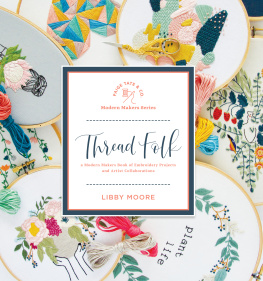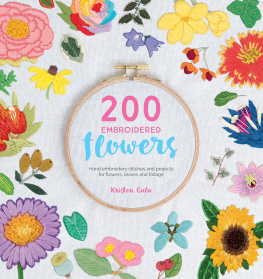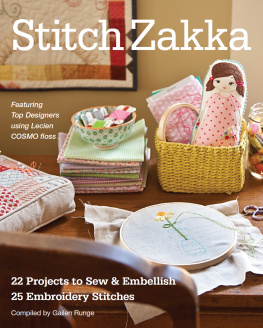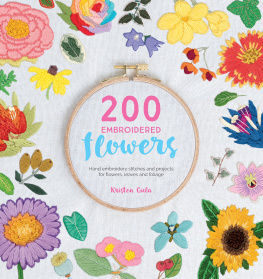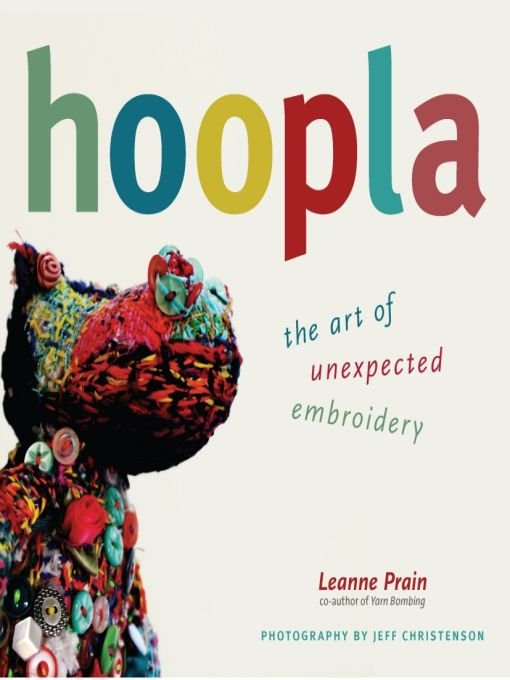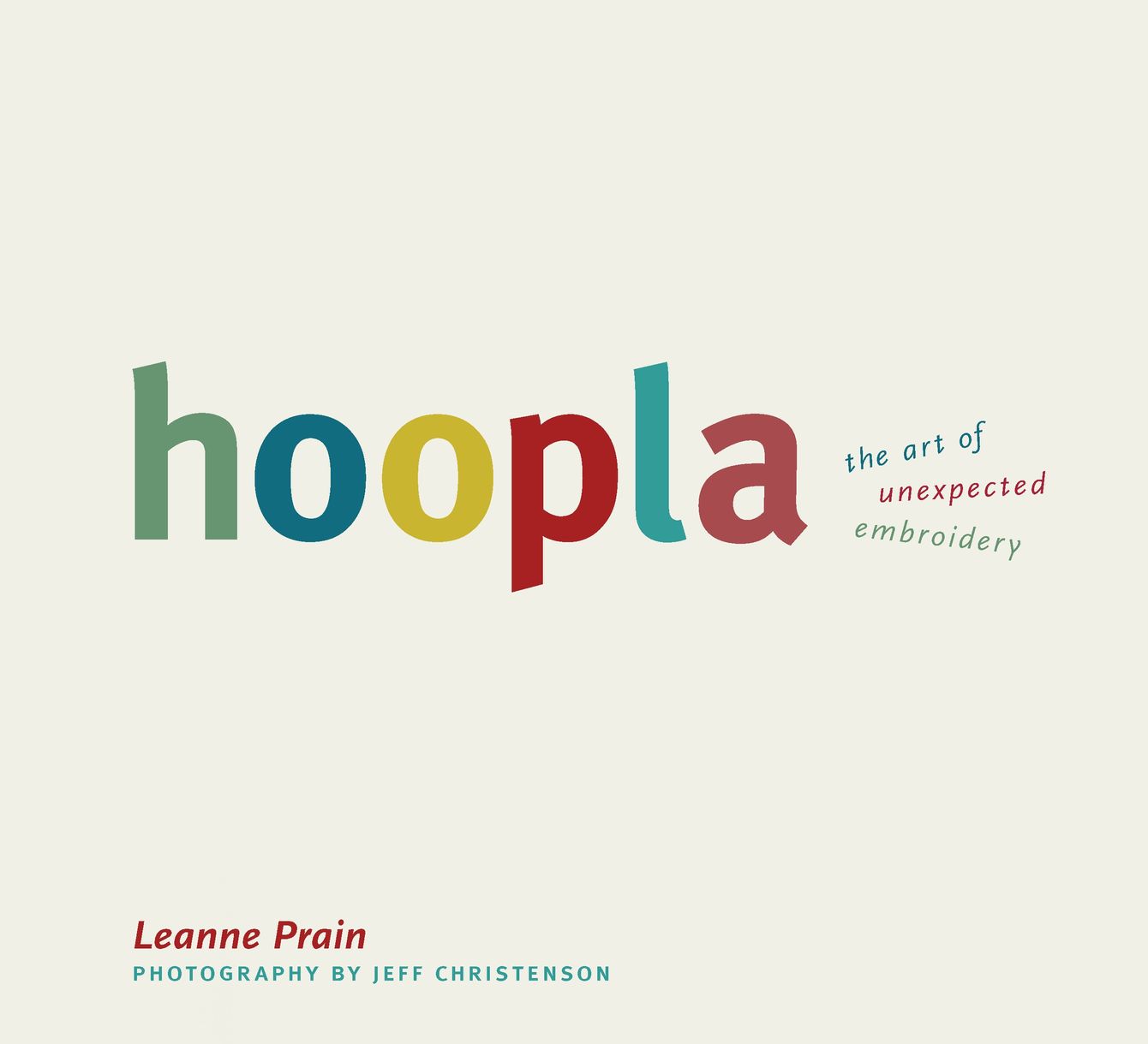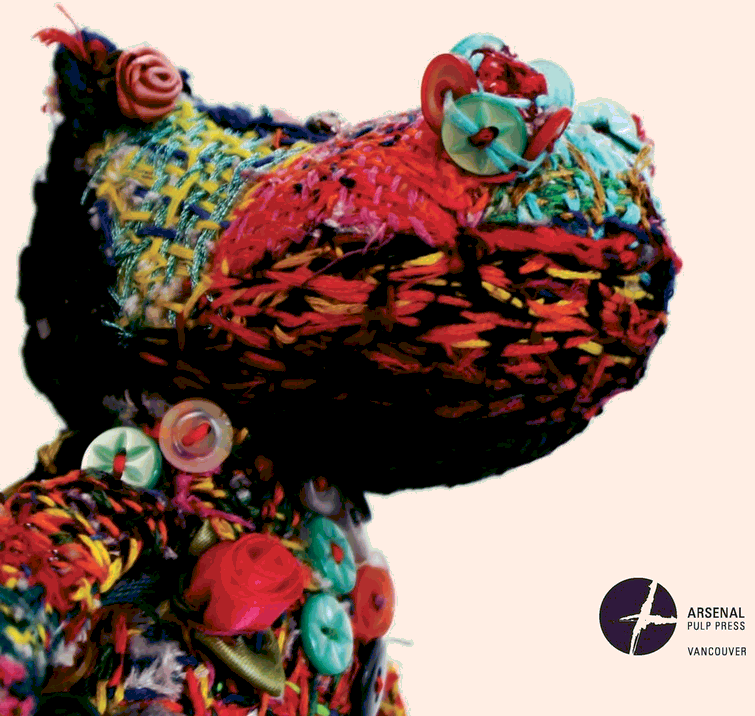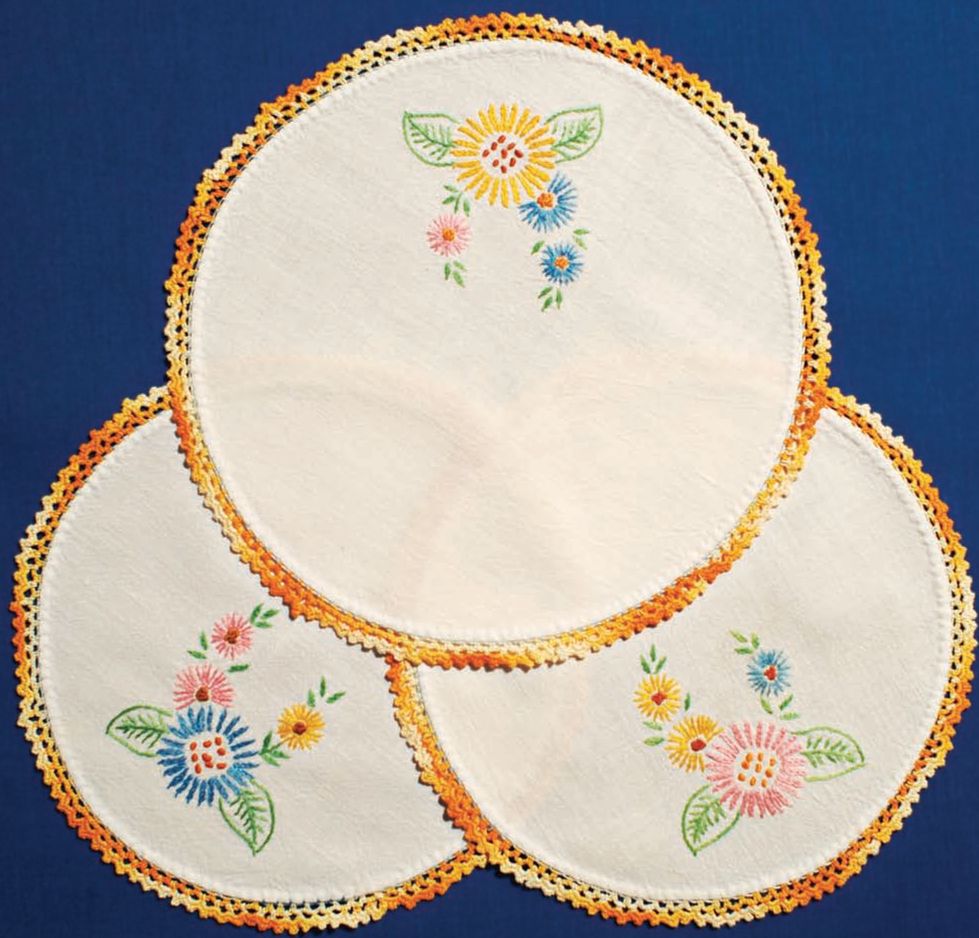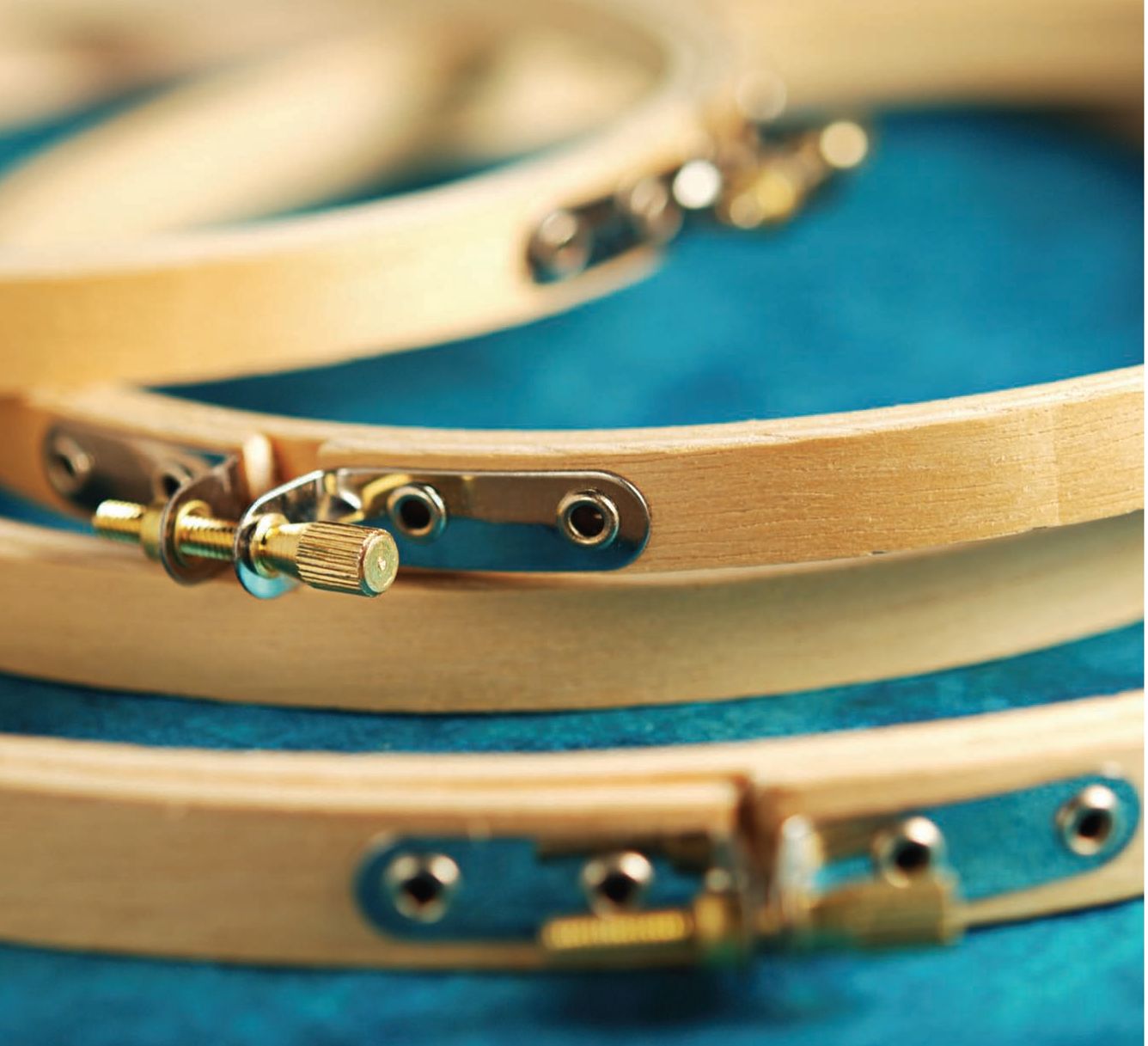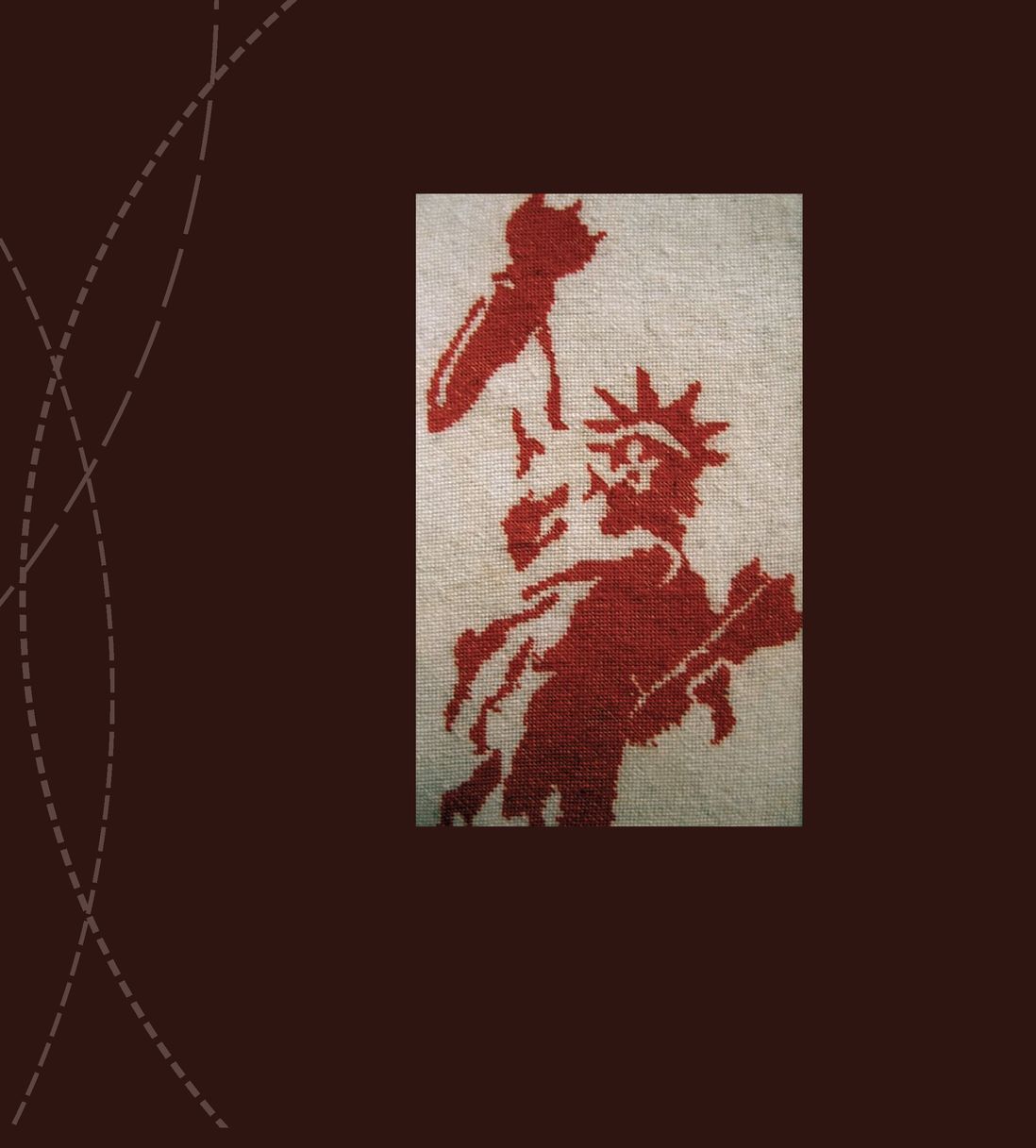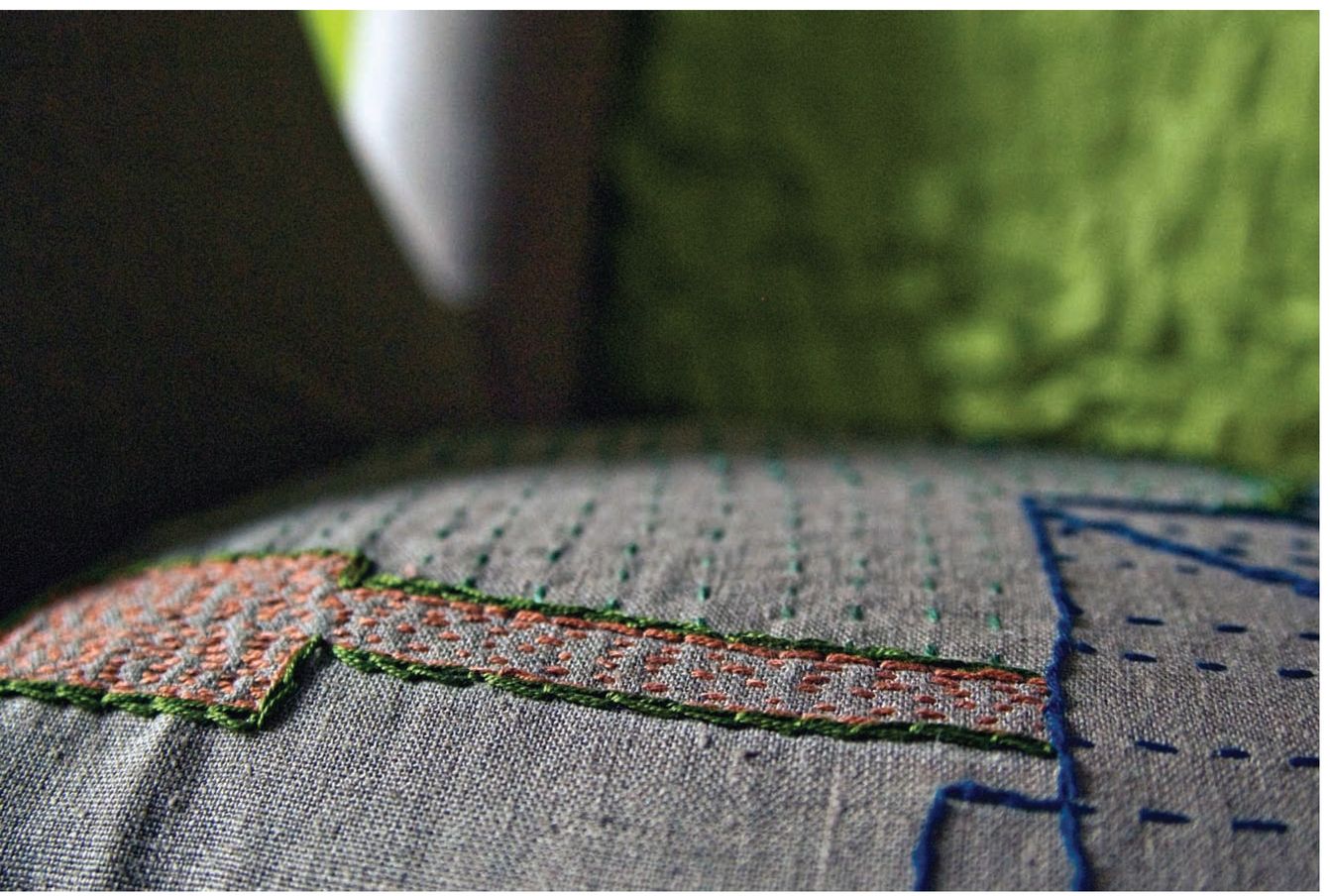Table of Contents
This book is dedicated to those who embroider and to those who wish to learn.
Doilies embroidered by Eva Margaret Black, my great-grandmother, in the 1950s.
Foreword
BETSY GREER
Embroidery. What I like most about it is how it can be, as the title of this book says, unexpected. It can be teeny tiny or massive and still catch you unawares. Having done various types of needlecraft, I especially love the intimacy of embroiderythe fairytale essence of using a needle and a thread, the idea that creation can mend as well as better.
After spending several years focused on knitting, Ive moved on to cross-stitch. In 2005, I began a series of cross-stitch pieces based on international war graffiti. I felt so helpless in the face of the vast and visceral reality of war and horrified by how we have become so used to itthat it turns into backdrop instead of news. Sometimes, just walking down the street, Id be humbled by the fact that thousands upon thousands of people cant walk down the street themselves because of war. Looking online, I saw anti-war graffiti pieces created by people around the world whose voices arent being heard, and it was heartbreaking. Turning those rough, real images, painted on brick walls, into soft pieces of cross-stitch was a way of marking the presence of the pieces, a way of affirming what someone anonymous scribbled on a building thousands of miles away. And all those thousands and thousands of stitches ended up helping me find my own calm center amidst my anger and frustration at my governments foreign policy. Similar sentiments seem to echo in the work of many contributors in this book, as we find embroidery allows us to find that place within ourselves that is alive, meditative, strong, connected, and safe.
In giving us the chance to fully concentrate on whats happening with our hands and hoops, either by offering a meditative calm or a necessary respite from the chaos of the everyday, embroidery allows us to be silent but not subservient. This trademark silence can put things back in perspective, mend our thoughts, calm our confusion, energize us. The work leaves behind the mark of human hands, and as it grows toward its completion, it reminds us that there is perfection in the imperfection, both in our own lives and in our work. Like our individual lives, our work is malleable, in transition, a figment of our imaginations made real by needle, thread, and time.
The work in this book is proof that even the tiniest of movements (a single stitch) can change our attitudes, our minds, our days. Not only can embroidery fortify the maker, it can also fortify those who view it. It lets us know were not alone, that there is power in making, that there is infinite beauty embedded in the smallest of acts and items. Whether were stitching on playing cards, canvas, dolls, or a bed sheet, were all saying, We were here. This moment, this image matters. Were reclaiming, strengthening, and sharing our own voices, and in doing so, hopefully helping others to do the same, to explore, play, create, and love with each and every stitch, just as with each and every breath.
Betsy Greer is the author of Knitting for Good! A Guide to Creating Personal, Social, and Political Change, Stitch by Stitch and runs the website craftivism.com.
International War Graffiti. Cross-stitch Series #3, Newcastle, 2008, floss on fabric, 6 10 in (15.24 25.4 cm)
Annie Coggan Crawford, Marie Antoinettes Garden: Le Petit Trianon, 2008, embroidery, fabric, bench, 34 (ht) 40 (length) 20 (depth) in (86.36 101.6 50.8 cm). Photo: Jennifer Hudson
Acknowledgments
This book would not have been possible without the contributions, enthusiasm, and support of the following people:
Id like to thank Jeff Christenson for everything he does. Thanks Jeff for the days (and nights) of hard work, the downtime, and everything in between.
Special thanks to Diane Farnsworth, Laura Farina, Angela Ready, Kat Siddle, and Susannah M. Smith for making the long journey of writing bright, and to my parents Connie and Dan Prain for setting me on a crafty path early on in life.
I sincerely appreciate the very photogenic crowd of friends who were willing to model projects: Erin Ashenhurst, Adam Farnsworth, Andrew Luketic, Mandy Moore, Julia Monks, Julie Morris, Angie Ready, Kat Siddle, Paul Skrudland, and Audrey Wang.
Id like to acknowledge Cathy Christenson, Maryanne Chu, Emily Carr University of Art and Design, Otis Records, Christie Paterson, Shelley Prain, Angie Ready, Jim Sawada, and Kat Siddle for lending props and letting us take photographs in your homes and businesses.
Thanks to Diane Yee of Electra Design for creating another beautiful book. You are a pleasure to work with.
Thanks to Shyla Seller for championing the idea for this book, and to Robert Ballantyne, Cynara Geissler, Brian Lam, and Susan Safyan for allowing me the opportunity to bring some more textile mayhem to Arsenal Pulp Press. I feel honored to be able to work with such great people.
This book would not exist without the participation of the many artists, photographers, and designers who took the time to tell me about their lives, send files, and create original patterns. A huge and heart-felt thank you to the contributors who trusted me with their work and their stories: Amy Adoyzie, Cate Anevski, Joanne Arnett, Heather Bain, Jennifer Baker, Amanda Bowles, Malarie Burgess, Jason Cawood, Jamie Chalmers, Annie Coggan Crawford, Kirsten Chursinoff, Caleb Crawford, Jacque Lynn Davis, Natalie Draz, Jessica Dreker, Andrea Drawjewizc, Angela Duggan, Sarah Edwards, Ulrika Erdes, Karyn Fraser, Brette Gabel, Alyssa Glass, Betsy Greer, Jenny Hart, Sarah Haxby, Eliot M. Henning, Sarah Hernandez, The Hopeso Group, Marie Horstead, Jennifer Hudson, Takashi Iwasaki, Nicola Jarvis, Lynn Kearns, Abby Krause, Liz Kueneke, Siobhan Long, Aubrey Longley-Cook, Rosa Martyn, Ray Materson, Laura McMillian, Krista Muir, Johnny Murder, Rebekah Nathan, Penny Nickels, Esther Oh, Iviva Olenick, Andrew J. Phares, Claire Platt, Christopher Prendergast, Jo Safferton, Richard Saja, Ellen Schinderman, Kat Siddle, Laura Splan, Erin Stanton, Sarah Terry, Matilda Tumin, Olivia Tumim, Allison Tunnis, Barbara Randall, Alexandra Walters, Jenny Webb, Sasha Webb, and Sherri Lynn Wood.
Richard Saja, Just This Once, 2009, embroidery floss, toile, 23 in (58.42 cm) diameter. Photo: Richard Saja


